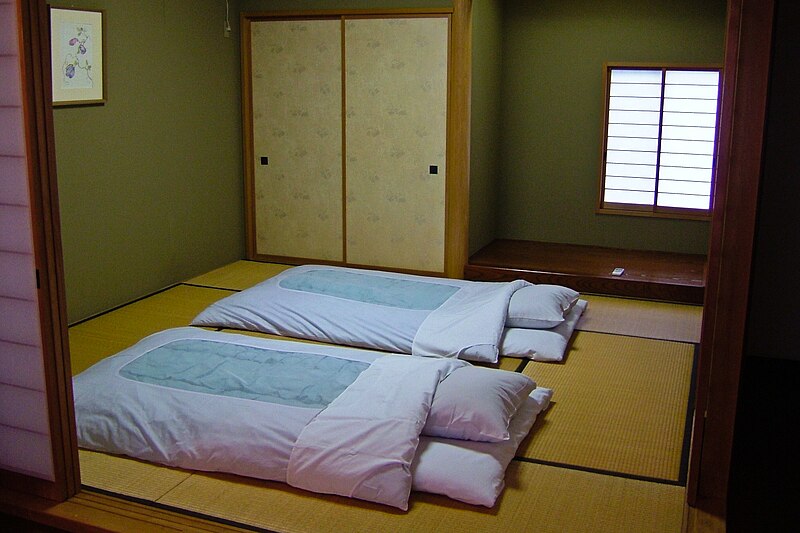When hearing the word futon, you are likely to first think about the sofa-bed combination that is a staple in college dorm rooms. However, this is actually a Western adaptation of the Japanese futon, which is placed on the floor every night and folded and stored in a closet every morning.

What is a futon?
The Japanese futon, which comes in three sizes (single, semi-double, and double), is composed of a quilt and a padded bottom mattress made of wool, synthetic batting, cotton, or a combination of these materials. They can be bought in specialty stores or department stores and sold as a set which includes a pillow. Also included in the futon set are a foam pad, sheets, blanket, and duvet. They are sturdier than an air mattress, used on top of tatami flooring, and must be put away during the day, thereby clearing the space for other activities. The maintenance of the Japanese futon is a little more complicated than your regular bed frame and mattress.
Futon maintenance
To help maintain your futon, you will need to buy a tataki, which is a bamboo carpet beater used to remove unwanted dust and dirt; this cleaning should be performed at least once every two weeks and more often during the rainy season and cold months. You will also have to have a clothing line or bar to expose the futon materials to the sun’s heat, which helps to avoid the growth of mold and fungus especially during the humid months starting at the end of July through August. It’s easiest to do this while washing the duvet. The sun’s heat and fresh air should also keep the futon from smelling stale from being indoors and stored in closets most of the time.
Part of the maintenance of a futon is how you fold it after use. Keep it folded in thirds while the blankets folded in four. A good visual to consider when folding your futon is to follow the letter Z. This is considered the best way to avoid mites and molds. When you fold it, only the futon part should touch the floor. Everything else is placed on top of the futon with the pillow on the top of the pile. The tatami flooring or mat must also be kept clean and dust-free during the day; another reason to not wear shoes in the house.

Additional tips when using a futon
● During the cold months, you should consider buying extra padding for insulation and a winter water hot bag for your feet; these are easily found at grocery stores during the cold season but be careful to keep it at the very bottom of your bed as skin contact will may cause a slow heat burn.
● You might want to invest in desiccant crystals which are sold in packs for placing under the futon or between the mat and the futon. These packs prevent molds and damp odors from permeating through your futon. They have to be replaced regularly since over time, they turn to gel and become useless.
● If you are a guest in a Japanese house and you are given a futon to sleep on, be sure to fold it after use. If you are in a guest house with room service, a maid will come in and do it for you.
● Finally, if you are worried about “sleeping on the floor,” don’t be. The Japanese futon is very comfortable and cozy.










